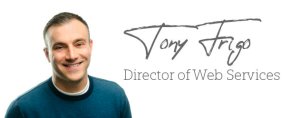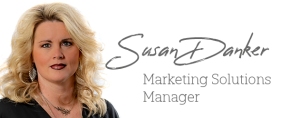Most firms do 90-10…but the magic happens at 10-90!

My wife Michelle and I recently took an extended trip to Europe, visiting some great hotels in London, Paris and Lake Como. We both love Europe and great hotels, so we picked the hotels we wanted to stay in based on their incredible reputations worldwide with respect to elegance, beauty and impeccable customer service.
We stayed at Claridge’s in London, the Ritz Paris (not to be confused with The Ritz-Carlton in Sarasota, one of our other favorite hotels and where we’ll see everyone at Inspire this year), and the Grand Hotel Tremezzo at Lake Como, Italy. The interesting thing about each of these properties is that they’re not a part of any corporate chain. They’re independently family-owned businesses—much like yours.
I’ve always been fascinated by how boutique family-owned businesses reach such a status. It’s that status—call it brand recognition—that allows each of those brands to charge appropriately. The ability to charge appropriately is the economic fuel that allows a business to hire the best people, to not overfill their business funnel, to reinvest and keep standards high. And all of this further drives the brand and attracts ideal customers.
90% effort, 10%…whatever? Think again
Fast-forward to near the end of our trip. I’m having my morning coffee on the balcony of the Grand Hotel Tremezzo overlooking Lake Como (I know, but someone has to do it). I’m reading the international version of The New York Times (NYT) when I see an article about what makes a boutique business great.
According to the article, “Most businesses put in 90% of the effort to make their business workable and don’t bother with the last 10%, which is crossing all the T’s and dotting the I’s to make their business remarkable.” It went on to say, “What separates the good businesses from the legendary ones is the investment in the last 10%.” And “…the last 10% requires as much effort as the prior 90% in order to become great.”
I’ve heard so many business coaches and consultants say, “Just do the 90% and move on, because the last 10% requires too much effort and it’s not worth it.” What clearly resonated with me in this NYT article might have been the message itself—but honestly, I think it was more that it was the right message at the right time.
What made it the right time? Well, I’d just had three incredible hotel experiences where they’d put in the 90% effort to close the 10% gap to near perfection.
The freedom of boutique
It’s also become clear to me since the pandemic that the traditional accounting firm business models are no longer sustainable. By that, I mean the volume of tax season and simply chucking more clients into the system. Think about it. If you’re doing just the 90%, like everyone else, then there really isn’t anything separating you from other firms.
Let’s now take this a step further. If you do the work to create a legendary experience for clients, would that change what you could charge? If you were proactive with clients’ needs instead of reactive, would that further differentiate your firm?
It really is about the ability to generate enough revenue to power your economic engine. Enough revenue to allow you the freedom to provide an incredible client experience while also creating an amazing team experience. This also means not overburdening your staff and creating a desirable work environment.
I just experienced it at each of the hotels I visited, and I promise—it’s possible even in a boutique business like yours. In fact, it’s probably more attainable.
That magic 10%
So, what level of energy is required to perform the last 10%? According to the article, this is where another 90% effort comes in.
The magic 10% is powered by a clear business model. This means bringing in the right number of ideal clients who buy your predefined products and use the tools you’ve curated to efficiently deliver services. It’s a model where you frictionlessly collect all client data necessary to serve clients proactively and help them feel holistically served. Finally, this all happens within a beautiful environment, with a well-constructed brand, where every T is crossed and every I is dotted. Yes, it takes a lot of effort, but it’s game-changing.
I recently had a friend and fellow firm owner tell me that after a bit of analysis, he realized that 85% of his firm’s billings come from just 25% of their clients. He went on to say that 93% of their billings come from 50% of their clients.
Consider that for just a moment. Could you raise fees by 7%, close the gap and reduce your client list by 50%? Would this allow you the time to invest the 90% of energy required to be a legendary firm (to achieve that magic 10%)? If so, what would the impact be on your two biggest and best assets—your clients and your team?
Every firm should be doing the math right now, because now is the time to make the magic happen. Now is the time to create a sustainable, truly legendary boutique firm.
If you’d like more ideas on going for that magic 10%, check out this Rightworks blog article, How to offer an unparalleled client experience and crush the competition.

Connection: The cure for an unhealthy culture


For years, we’ve heard that quickly changing technologies drive disruption in the accounting profession. Now, however, we’re witnessing the root of disruption coming from humans who are digging in their heels and demanding change.
It’s no secret that culture in the workplace has completely shifted. Employees want more balance in their workday with flexibility and autonomy—and employers are seeking ways to provide that balance.
The purpose of this new ThoughtLeader section is to explore all aspects of this new disruption, from how it’s impacting our profession to thought-provoking ideas that inspire action. Each month, we’ll highlight topics and trends while exploring ways to improve the health of your culture. This month, we take a look at “connection.”
Making meetings meaningful (no, really)
We often hear people say, “We don’t have time for staff meetings.” While that’s understandable, it can be a sign that the culture health of the firm is at stake. Without the expectation of connection on a consistent basis, staff feel disconnected from one another and from their work to elevate the firm’s vision.
So how do we leverage staff meetings to improve relationships and the work we’re doing instead of thinking of them as a waste of time? Make them meaningful! Here are a few suggestions to get you on track:
- Establish a regular cadence. Schedule 30 minutes to one hour on the same day and at the same time—every week. Consider making it a lunch meeting where you provide food for the team. Or, if you’re working remotely, supply a stipend to pay for lunch that day.
- Always have an agenda. Make it shareable firm-wide well in advance of the meeting. Allow additions to be made by staff members who have things to discuss. This small step will empower them and make them feel more connected to the purpose of the meeting.
- Ask everyone to share at least one thing. As an example, they can share one thing they’re proud of, one thing they’re working on or one thing that made them laugh since the last meeting. Questions like these offer easy (and fun) opportunities for small talk and personal connection.
- Stay away from conversations that aren’t meaningful to the entire group. If it’s a matter that only a few staff members are involved with, take it to a different meeting.
- Put up a parking lot. No, not the concrete kind. We’re talking about creating a meeting category called, “The Parking Lot,” where topics that couldn’t be discussed during the current meeting are recorded and held for the next meeting. This ensures that everyone’s voice can be heard.
- Find a place to start at your first meeting. Choose an article from this month’s ThoughtLeader and ask staff to read it before the meeting. Pick out some talking points and ask for staff input. Be sure to identify the outcome you expect people to take away from the article (but don’t be surprised if the results are different than your expectations; that’s the beauty of individual points of view). Some questions to ask: What’s the goal of the article and how does it relate to your own firm improvement efforts? Who can help with the efforts? What are the action items?
At the heart of every organization, you’ll find the people, not the percentages. That’s why reiterating to the team on a regular basis that their needs have been heard results in productive meetings—and more importantly, meaningful connections.
Because trust us…nothing is more gratifying to human beings than knowing that what we do makes a positive difference. So when you elevate the voice of every team member, you not only show them that you care about their input and opinions—you tell them, in the loudest and clearest voice possible, that they matter to the world, to the business and to you.
If you’d like to learn more about creating a great firm culture, check out this informative Rightworks blog article, Create an irresistible accounting firm culture.


How to keep your remote hiring and onboarding smart and secure

It’s July 2022. The unemployment rate is the lowest it’s been in 10 years, having dropped approximately 10% over the last two years as we fought our way through the pandemic and The Great Resignation.
An astonishing—in fact, record-breaking—number of people have left their jobs since the start of the pandemic, and that’s showing no signs of subsiding anytime soon.
So if you thought you were the only one posting a job ad or listing and not receiving a single applicant…far from it. This isn’t an industry problem, it’s a global problem. A separate pandemic, if you will.
Back in 2020, most of us were forced into working from home—if you were lucky enough to have your business survive, that is. And most of us weren’t prepared for such an immediate transition. Sure, your employees had laptops and phones they could use. But what was the etiquette and the cadence for working from home? What were the expectations? What would employees not have access to at home that they once had access to in the office? How did you know your firm’s and your clients’ data would be safe, secure and protected?
Well, we’ve been doing this for two years now. Some of us longer. And hopefully, if you’re still working from home, you’ve gotten better at it as an organization. However, if you’re still struggling, let me tell you why you should keep trying to get better.
Do desperate times call for desperate measures?
How do we adapt to a market that can’t supply our demand—that demand being qualified candidates? The best way to make an immediate impact on a market like this is to adapt the qualifications of our demand to meet the supply that’s available.
Maybe that sounds desperate…although, I think it’s just simple economics. Adapting isn’t an act of desperation; rather, it’s an act of foresight. It will only start to feel like desperation if you refuse to adapt.
The point I’m trying to make here is that you need a way to attract candidates to a modern business. And modern businesses require modern solutions (aka working remotely).
So take a moment and think about your current job posting, which, for argument’s sake, let’s say reached candidates within 45 minutes of driving time from your office. If you’re not in a major metropolitan area, that’s going to be a very limited demographic—and simply not a large enough population.
But what if you could expand that to search for people within your state? How about within your time zone? Or how about the six million unemployed people across the entire country, along with those who are employed but seeking new opportunities?
You’ve just opened the door to a candidate pool you never had access to in the past. Now, let’s say you find one of these people and you want to hire them. How do you make your initial communication? How do you send secure documents like an offer letter? And how do you onboard a new employee and get them connected to the technology your business uses in a smart, efficient and secure manner?
Hiring and onboarding with smart security management
If you have an eSignature platform you already use for your client base, you should be using that internally to assist new employees in signing their offer letters safely and securely. The same goes for any kind of document management system you might be using in your firm. In fact, most of the technology you already own and use daily for your clients can likely be used for a desirable candidate as well.
When you onboard a new remote employee, you provide them with a slew of technology, including but not limited to the following:
- Laptop
- High-speed internet
- Webcam
- Docking station (mouse, keyboard, etc.)
- Monitors
- Scanner/printer/shredder (if applicable)
- Headset and/or microphone
- Phone
To make sure these pieces of technology are set up securely and have fluid integration with the rest of your business, you need to be prepared.
One of the most basic ways to prepare for virtual onboarding is with a VPN/terminal or hosted server access. Only supply credentials or information to a candidate from whom you’ve received a signed offer letter. This is critical to protect your business and its data or information.
After a secure connection has been established and your candidate has all their new hardware set up, protect them immediately by granting them access or a license to your anti-virus program before they try to download any applications on their PC.
Where needed, it should be just as critical to set up multifactor authentication (MFA). Yes, it can be annoying to wait for a code to be texted or emailed to your phone. And yes, it will take longer to log in. But it’s safer and more secure than any other alternative—and worth every bit of the hassle.
You should have MFA set up for any software a new employee will access. It could be, but is not limited to, any of the following:
- Project management software
- Messaging (e.g., Slack, Teams, etc.)
- Voice over Internet Protocol (VoIP)
- Video meeting software (e.g., Zoom, Teams)
- Password storage app
Your onboarding champion should be responsible for monitoring the fluidity of this process and, if possible, work with your IT team to ensure that your new hires are not only getting everything they need for successful remote work, but that they’re receiving those things securely.
If you’re in search of a tool that can help you manage your new remote onboarding process, or maybe just don’t know where to start, Rightworks Academy members have access to our “Security checklist for remote employees” tool (account login required). Or, if you’re looking for even more details and suggestions about how to roll out remote employee onboarding, Rightworks Academy members can also click here (account login required) to check out our “Working remotely” lesson.
Make sure you evaluate your technology to see what you’re missing. Communicate policies, expectations and digital protocols with your new employees. Develop a consistent roll-out strategy that you only change for the sake of improvement.
And keep in mind that to ensure these steps are all completed successfully, you’ll need to put your onboarding process under scrutiny—and continue to keep a watchful eye on the process to make things easier (and more secure) for you and your team.
If you’d like to learn more about conquering staffing issues, check out our Rightworks blog article, Attacking the staffing challenge: Top 4 strategies.


Domain ownership and security: Establish a solid foundation for your firm online

Here’s a topic I willingly kick every chance I get. Let’s start with some warm-up stretches (since I’m not as young as I used to be, and it takes a lot longer to recover from pulled muscles).
Domain ownership and security is a foundational piece of every modern firm’s business—but one that often gets overlooked or undervalued. Each year, we help many firms who encounter significant pain, frustration and costs associated with a lack of ownership and security around their domain. And while we’re always ready to help firms when pain exists, we prefer to help you avoid the pains altogether. Hence my propensity for swinging a leg at this topic.
In this article, I share some thoughts on how a modern firm should consider the importance of domain ownership, along with a few tips on what you can do to establish better controls and security.
Important questions to ask
Every modern firm should have solid ownership and controlled access to physical and digital assets. Firm owners, pause here for a moment and answer these two questions:
- Do I have ownership and control over the access to my physical office?
- Do I have ownership and control over access to my domain?
You might think, “Of course I have ownership/control of my firm’s office! This isn’t a bus station. We don’t let anyone just come and go as they please.”
I hope you’ve answered similarly for the control/security of your domain. (Swings leg.) However, we often find that firms are either unaware of who owns and controls their domain…or they willfully run in the opposite direction because the term domain sounds technical. Let me assure you that while updating settings on your domain is technical, having direct ownership and controlling access is not.
(Swings leg again.) Clear domain ownership and controlling access are key to a modern firm’s long-term success. Why? Because your domain establishes the foundation that most of your digital brand, communications and interactions will work on and through for as long as your firm is in business.
Which, of course, begs more questions:
- Are you planning to hire more folks and upgrade to a better email solution?
- Do you plan to sign up for an online marketing software?
- Will you be changing your firm’s brand or name?
- Is it past time you built a new website?
- Do you plan to sell your firm one day?
These common situations all involve accessing or granting access to your domain at some level. When you lack ownership and control over access to your domain, you set yourself up for many frustrations, pains and time that you could invest elsewhere.
Important answers to know
Here’s what you can do (and be aware of) to establish better domain controls/security:
- Know your registrar(s). This is where you purchased your domain(s). If you don’t know who your registrar is, use an online lookup such as who.is to see where your domain is currently registered.
- Not all registrars are created equal. Some registrars are faster at updating and propagating changes, providing better customer service, and/or including basic domain privacy and security with your registration.
- You could have multiple registrars if you’ve purchased more than one domain.
- Your domain should have basic privacy, which involves redacting your who.is information online.
- Non-redacted personal details in your who.is information can be used by spammers and bad actors for malicious purposes. Some registrars provide this basic coverage with domain registration, while others require that you purchase it as an add-on.
- Secure your login credentials and be prepared to share them with a tech when needed.
- Some registrars provide a built-in function called Delegate Access, which allows you to securely share access to your domain with a trusted party. When this function is unavailable, we recommend using a password keeper that allows sharing to avoid sending credentials over unsecured channels such as email.
Need more details about what your domain is, why it’s important and how to secure it? Rightworks Academy members can click here (account login required) to check out our “Your domain at a glance” guide.
Have you ever wondered what every accounting firm website should have? Find out in this Rightworks blog article, Must-haves: What goes on a modern accounting firm’s website.


Smart Security Management for business Facebook and Google Business Profiles

Most modern businesses operate in tech-dependent atmospheres for convenience and efficiency. However, if you want to continue enjoying the benefits that technology lends to your business processes, it’s imperative to implement security management measures to protect all your data in the online world.
You’re probably diligent about safeguarding your digital banking and payment platforms, but are you taking precautions with your online presence platforms? Your business Facebook (FB) and Google Business Profile (GBP) need constant supervision to prevent hacking attempts, too.
Tips for stronger security
Facebook hackers have devised multiple avenues to gather information through phishing attempts. If you’re using your personal FB account to administer your business page, a hacker accessing your personal account could affect your business page.
Protecting your personal account will pay it forward in keeping your business page more secure—and that starts with your password. Some points to keep in mind when creating passwords:
- Be sure to change the password to your personal account every quarter, and never use or repeat passwords you use for other accounts.
- Avoid incorporating phone numbers, birthdays, anniversaries, and names of pets or family.
- Create strong passwords by using song lyrics or phrases with special characters and numbers.
Another step you can take to keep your account secure is two-factor authentication (2FA). This option can be set up to require a code in order to log in. The code is sent to you via text or authentication apps installed on your phone (e.g., Google Authenticator, Duo Mobile). A code will be sent to you each time there’s a new login attempt to your account, preventing easy access for hackers.
Phishing trend 1: Fake reviews
An additional phishing trend recently occurring on business FB pages is fake reviews. A fraudulent FB user leaves a five-star review on your business page, usually a sales pitch with an email link or phone number. Should you, a client or a prospect click the email link or call the phone number, you’re asked to provide personal information that enables the hacker to steal your identity.
Immediately report these fake reviews to FB, and block and ban the user to prevent further phishing attempts by following these steps:
- Log in to your business’s Facebook page and find the review in question.
- Click on the three dots in the top right corner of the review, and choose the “report post” option from the menu that appears.
- Follow the instructions to report the post. A FB administrator should review it within a few days but may not take any action to remove it.
If FB doesn’t remove the fake review, be sure to publicly respond to it so other customers are alerted to be cautious of following through with the call to action in the review and explain that the fake review should be disregarded.
Phishing trend 2: Fraudulent GBP ownership request
Business owners should also be on the lookout for fraudulent requests for ownership of legitimately owned Google Business Profiles.
When this happens, the GBP owner receives an email notification from Google that someone has requested ownership. The email contains a call to action that asks you to respond to the request. Important: Immediately respond to the request. A quick response will inform Google that the user making the request is fraudulent, and Google will block any future requests.
Should Google’s requests go ignored and ownership is granted to the unauthorized user, the process to regain control of your GBP requires time-consuming communication with Google to prove your rightful ownership.
Take the following steps to deny and report a fraudulent GBP ownership request:
- Click the “respond” button in the ownership request email (after you verify it is a legitimate email).
- Click the circle to the left of the “deny request” option.
- Type “fraudulent request” into the box asking for the denial reason.
- Click the “submit” button to complete the report.
Password changes, 2FA apps, and dedicated attention to login notifications and ownership requests may seem overwhelming. But trust us: Applying our security management advice and performing regular maintenance of your social media platforms will take much less time than the process you’ll endure trying to recover your accounts after they’ve been hacked.
Firm leaders who prefer not to shoulder the entire burden of security management often decide to outsource their marketing and social media management. If you’re not sure where to start, we invite you to check out how services like Digital Marketing Solutions can support you in taking the proactive steps necessary to defend your online presence and strengthen the digital integrity of your firm’s brand across your internet marketing resources.
Remember, your online presence is key to representing your firm to clients and prospects. That’s why keeping your social platforms safe from digital attacks is every bit as important as any other online security measures you have in place.
Would you like to learn more about developing a strong online presence? Start with this Rightworks blog article, 4 tips for mastering your firm’s online presence.


Hearts Touched with Fire: How Great Leaders are Made
by David Gergen
Atlas of the Heart: Mapping Meaningful Connection and the Language of Human Experience
by Brené Brown
What the Dog Saw: And Other Adventures
by Malcolm Gladwell
The High 5 Habit: Take Control of Your Life with One Simple Habit
by Mel Robbins



Events for Rightworks Academy members
Check out these upcoming events exclusively for Rightworks Academy members:
- July 13: Staff Training: Interviewing, recruiting and the pre-onboarding process (Part 2 of the Employee Experience series)
- July 20: Summer Technology Update Webinar: CRM considerations and Microsoft 365 better practices
- July 21: Staff Training: Using personality assessments to strengthen your team
- July 26: Academy Member Only Training: Making the most of your prospect marketing by leveraging your Rightworks Academy marketing content
- July 28: Summer Cybersecurity Webinar
See the entire webinar schedule and register at Resources > Events > Webinars in your Rightworks.com account.
Events for members and non-members
Not a Rightworks Academy member yet? We have you covered with live and on-demand events where you can learn more about Rightworks or the latest hot topics in the profession.
Visit rightworks.com/resources/live-on-demand-webinars for a continually updated schedule of events.
The Modern Firm® Workshop
These live, in-person two-day events feature Darren Root—who literally wrote the book on building a modern firm—and John Mitchell, our resident branding and culture expert. Get your hands on Rightworks’ proven blueprint for structured, intentional firm transformation to stay relevant and thrive in today’s new world. Choose from two dates and locations:
- August 30-31 – Dallas, TX
- October 4-5 – San Diego, CA
For more information and to register, visit rightworks.com/community-academy/events.
Member anniversaries
It’s time to recognize this month’s Rightworks Academy member anniversaries! Help us wish the following firms a Happy Rightworks Anniversary:
1 Year
J.B. Merritt & Associates
Stacey CPA, LLC
A+ Accounting Inc
Neiderhiser Consulting & Accounting Group, LLC
TG Advisors
Tracy Jones CPA LLC
NaviTax
Stacy Hammond CPA PLLC
Benchmark CPA Group LLC
Succentrix Business Advisors
Tax Smart Advisors LLC
Sisson Accounting PLLC
Sheila Brandenberg CPA LLC
5 Years
Angela L Eyster CPA LLC
Mayolo & Associates LLC
Greenwald + Company CPAs
Accuity, LLC
Stuart, Edelstein, Linderman & Co., Inc.
King McNamara Moriarty LLP
10 Years
Earney & Company, L.L.P.
Paquette & Company, LTD
Brand, Blackwell & Company, P.C.
Spiegelberg Financial Services
Greene Finney Cauley, LLP
Rust & Company CPAs
Cox Holsted & Associates PC
Berg Partners LLC
Andrews Consulting LLP
Bookkeeping & Management Systems, Inc.
Congratulations on your success, and we look forward to celebrating many more anniversaries with you and your teams!

